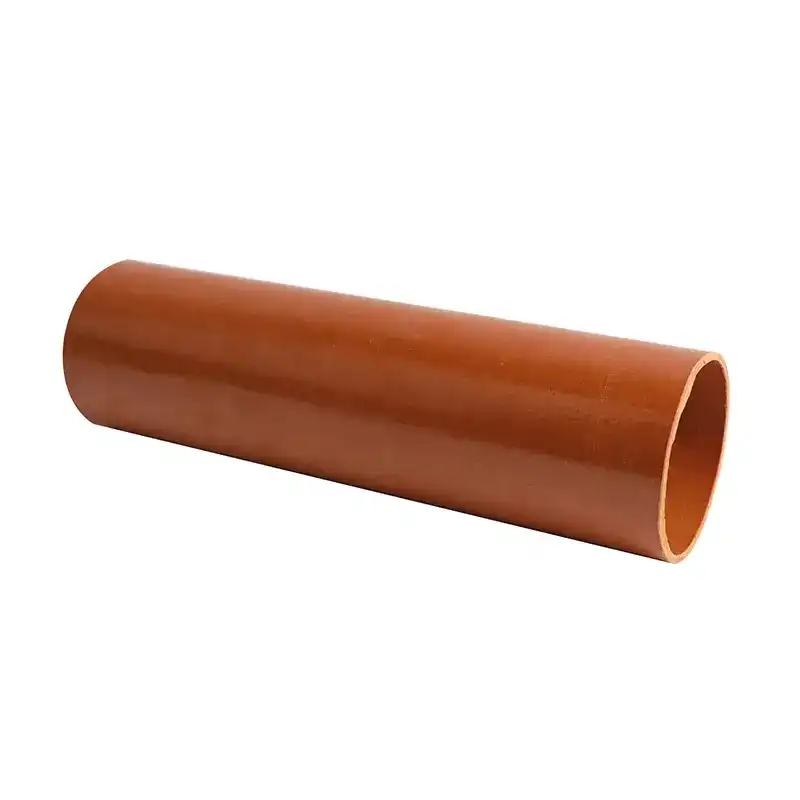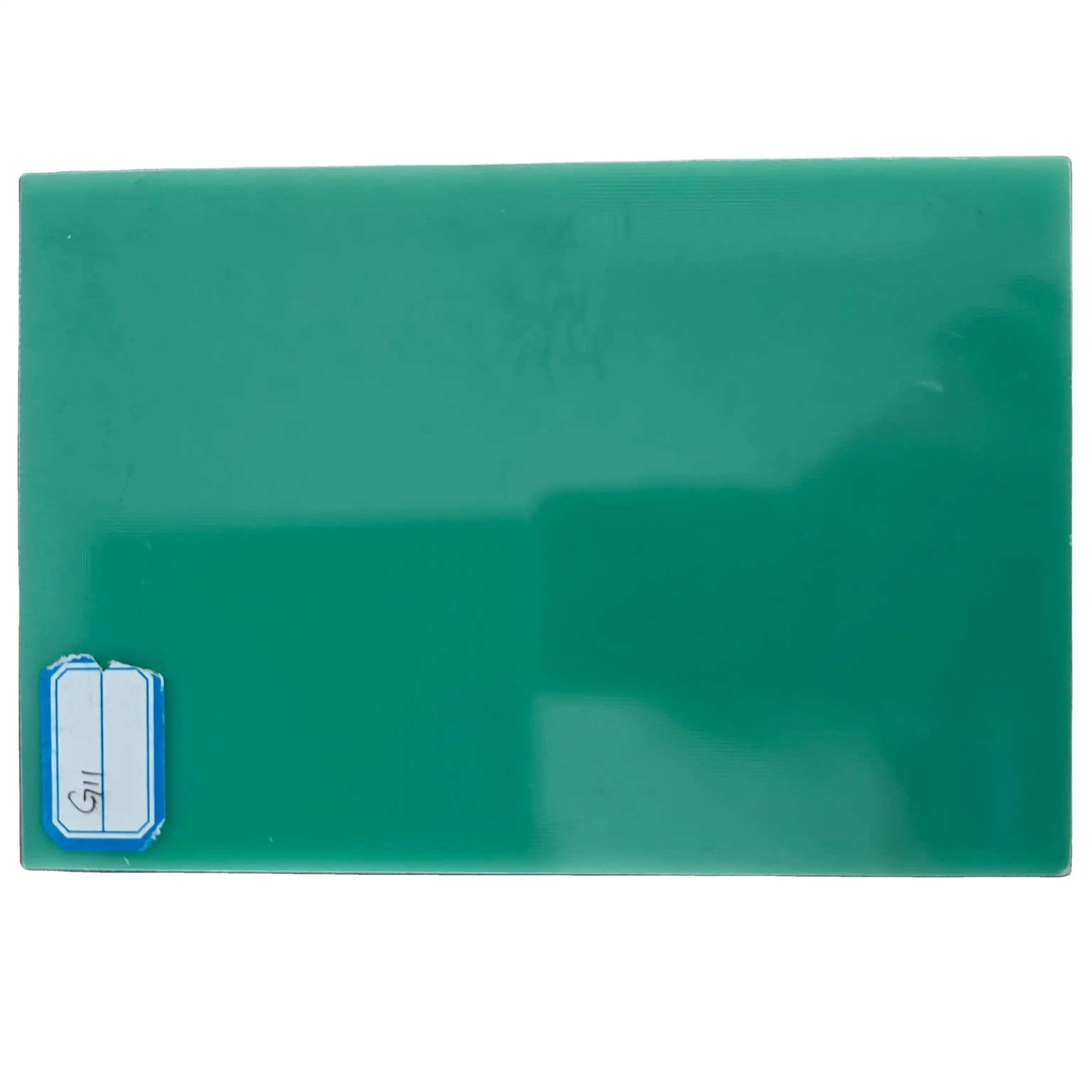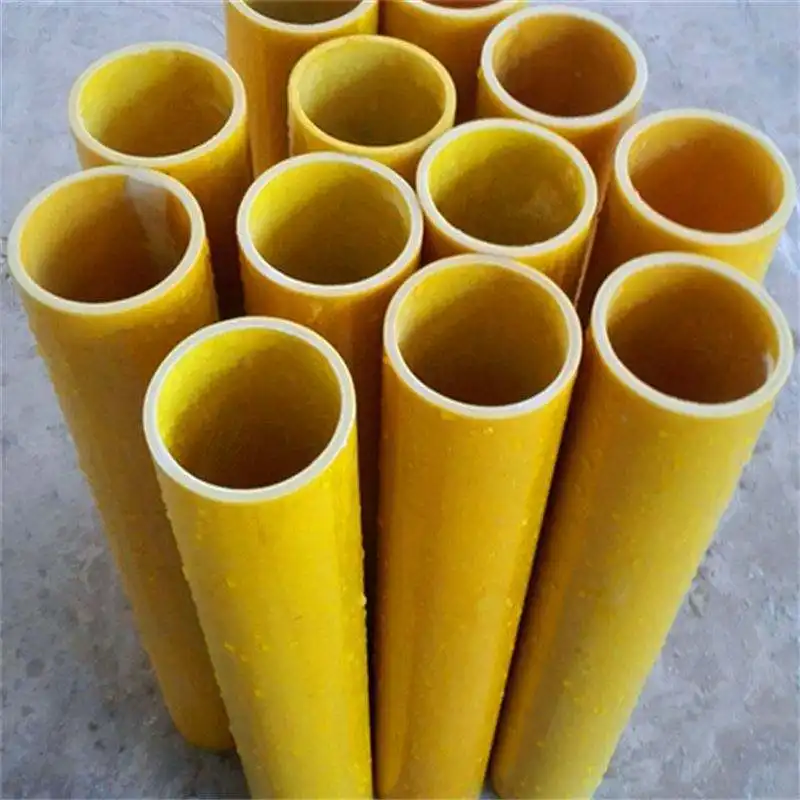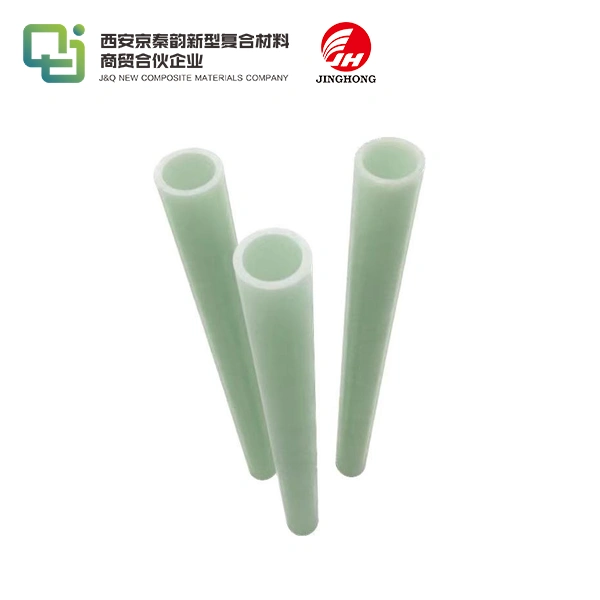How Does 3240 Epoxy Phenolic Glass Cloth Laminated Sheet Perform in Heat and Electricity?
2025-03-13 17:27:34
3240 epoxy phenolic glass cloth laminated sheet exhibits exceptional performance in both heat and electrical applications. This versatile material boasts impressive thermal stability, maintaining its structural integrity and electrical insulation properties even at elevated temperatures. Its low thermal expansion coefficient ensures dimensional stability across a wide temperature range. Electrically, the sheet demonstrates excellent dielectric strength and volume resistivity, making it an ideal choice for high-voltage insulation. The combination of epoxy resin and phenolic components, reinforced with glass cloth, creates a synergistic effect that enhances both thermal and electrical characteristics. This unique composition allows 3240 laminated sheet to excel in environments where heat resistance and electrical insulation are paramount, making it a preferred material in numerous industrial and electronic applications.
Thermal Properties and Applications of 3240 Epoxy Phenolic Glass Cloth Laminated Sheet
Heat Resistance and Thermal Stability
The 3240 epoxy phenolic glass cloth laminated sheet showcases remarkable heat resistance and thermal stability. Its unique composition allows it to withstand high temperatures without significant degradation of its mechanical or electrical properties. The epoxy-phenolic resin system forms a robust, cross-linked network that provides excellent thermal resistance. This network is further reinforced by the glass cloth, which adds structural stability and improves heat dissipation.
The material's ability to maintain its properties at elevated temperatures makes it suitable for applications in harsh environments. It can be used in components that are exposed to high temperatures, such as in automotive under-hood applications, industrial machinery, and electrical equipment operating in hot conditions. The thermal stability of 3240 laminated sheet ensures that it retains its shape and does not warp or deform when subjected to heat, maintaining the integrity of the components it's used in.
Thermal Conductivity and Insulation
While 3240 epoxy phenolic glass cloth laminated sheet provides excellent electrical insulation, it also offers good thermal insulation properties. The material's thermal conductivity is relatively low, which means it does not readily conduct heat. This characteristic makes it valuable in applications where thermal isolation is required, such as in electronic enclosures or as barriers in high-temperature environments.
However, the thermal insulation properties of 3240 laminated sheet are balanced with its ability to dissipate heat effectively. The glass cloth component aids in heat distribution, preventing the formation of hot spots that could potentially damage sensitive components. This balance between insulation and heat dissipation makes the material particularly useful in electronic applications where managing heat is crucial for optimal performance and longevity of devices.
Coefficient of Thermal Expansion
One of the key advantages of 3240 epoxy phenolic glass cloth laminated sheet is its low coefficient of thermal expansion (CTE). This property refers to how much the material expands or contracts with changes in temperature. The low CTE of 3240 laminated sheet means that it maintains dimensional stability across a wide range of temperatures.
This characteristic is particularly valuable in applications where precise tolerances must be maintained, even as temperatures fluctuate. For instance, in printed circuit boards (PCBs) used in high-reliability electronics, the low CTE of 3240 laminated sheet helps prevent warping and ensures that components remain properly aligned. In aerospace applications, where materials are subjected to extreme temperature variations, the dimensional stability of 3240 laminated sheet contributes to the overall reliability and safety of components.
Electrical Properties and Applications of 3240 Epoxy Phenolic Glass Cloth Laminated Sheet
Dielectric Strength and Breakdown Voltage
3240 epoxy phenolic glass cloth laminated sheet exhibits exceptional dielectric strength, which is a measure of its ability to withstand high voltages without electrical breakdown. This property is crucial in high-voltage applications where insulation is paramount. The material's high dielectric strength is attributed to its dense, cross-linked epoxy-phenolic structure and the reinforcing glass cloth, which together create a formidable barrier against electrical current flow.
The impressive breakdown voltage of 3240 laminated sheet makes it an excellent choice for insulation in transformers, switchgear, and other high-voltage equipment. It maintains its dielectric properties even under challenging conditions, such as high humidity or in the presence of contaminants, ensuring reliable performance in diverse environments. This robustness contributes to the longevity and safety of electrical systems, reducing the risk of electrical failures and associated hazards.
Volume and Surface Resistivity
Another notable electrical property of 3240 epoxy phenolic glass cloth laminated sheet is its high volume and surface resistivity. Volume resistivity refers to the material's ability to resist the flow of electric current through its bulk, while surface resistivity relates to its resistance to current flow across its surface. The high values for both these parameters in 3240 laminated sheet indicate its excellent insulating capabilities.
The high volume resistivity ensures that the material effectively prevents current leakage, making it suitable for applications where maintaining electrical isolation is critical. This property is particularly valuable in high-precision electronic devices and in power distribution systems. The high surface resistivity, on the other hand, minimizes surface tracking and erosion, enhancing the material's performance in high-humidity environments or where surface contamination might be a concern.
Frequency Dependence and Loss Tangent
3240 epoxy phenolic glass cloth laminated sheet demonstrates favorable behavior across a wide range of frequencies, making it suitable for various electronic and electrical applications. Its dielectric properties remain relatively stable over a broad frequency spectrum, which is crucial for maintaining consistent performance in RF (Radio Frequency) and high-speed digital applications.
The material's low loss tangent is another significant advantage. Loss tangent, also known as dissipation factor, is a measure of the energy lost in a dielectric material when an alternating electric field is applied. The low loss tangent of 3240 laminated sheet means that it dissipates minimal energy as heat when used in high-frequency applications. This characteristic makes it an excellent choice for high-frequency circuit boards, antenna substrates, and other applications where signal integrity and minimal power loss are essential.

Comparative Analysis: 3240 Epoxy Phenolic Glass Cloth Laminated Sheet vs. Other Insulating Materials
Comparison with FR-4
When comparing 3240 epoxy phenolic glass cloth laminated sheet with FR-4, one of the most commonly used laminate materials in the electronics industry, several key differences emerge. FR-4, a glass-reinforced epoxy laminate, is widely used in PCB manufacturing due to its good electrical properties and relatively low cost. However, 3240 laminated sheet often outperforms FR-4 in terms of heat resistance and thermal stability.
3240 laminated sheet typically has a higher glass transition temperature (Tg) compared to standard FR-4, allowing it to maintain its properties at higher operating temperatures. This makes 3240 laminated sheet more suitable for applications involving elevated temperatures or where thermal cycling is a concern. Additionally, 3240 laminated sheet generally exhibits better dimensional stability and lower moisture absorption than FR-4, which can be critical in high-reliability applications or harsh environments.
Comparison with Ceramic Insulators
Ceramic insulators are known for their excellent heat resistance and electrical insulation properties. When compared to 3240 epoxy phenolic glass cloth laminated sheet, ceramics often have superior heat resistance and can withstand even higher temperatures. However, 3240 laminated sheet offers several advantages over ceramic insulators in certain applications.
3240 laminated sheet is generally lighter, more impact-resistant, and easier to machine than ceramic insulators. It can be easily cut, drilled, and shaped into complex forms, making it more versatile in manufacturing processes. While ceramics may offer better performance in extreme high-temperature environments, 3240 laminated sheet provides a good balance of thermal and electrical properties for many applications, often at a lower cost and with greater design flexibility.
Comparison with PTFE-based Materials
PTFE (Polytetrafluoroethylene) based materials, such as PTFE-glass composites, are known for their excellent electrical properties, particularly at high frequencies. When comparing 3240 epoxy phenolic glass cloth laminated sheet with PTFE-based materials, each has its strengths in different areas.
PTFE-based materials generally have lower dielectric constants and loss tangents, making them superior for high-frequency applications where signal integrity is paramount. However, 3240 laminated sheet often provides better mechanical strength and dimensional stability. It also typically has better thermal conductivity than PTFE-based materials, which can be advantageous in applications where heat dissipation is important. In terms of cost, 3240 laminated sheet is often more economical than PTFE-based materials, making it a preferred choice in applications where the extreme low-loss properties of PTFE are not necessary.
Conclusion
3240 epoxy phenolic glass cloth laminated sheet demonstrates remarkable performance in both heat and electrical applications. Its exceptional thermal stability, low thermal expansion, high dielectric strength, and excellent resistivity make it a versatile material for various industrial and electronic uses. While it may not match the extreme properties of some specialized materials, 3240 laminated sheet offers a balanced combination of thermal, electrical, and mechanical properties that suit a wide range of applications. Its ability to maintain performance under challenging conditions, coupled with its manufacturability and cost-effectiveness, positions it as a valuable option in the realm of insulating materials.
Contact Us
For more information about 3240 epoxy phenolic glass cloth laminated sheet and how it can benefit your specific application, please contact our expert team. We're here to provide detailed specifications, discuss custom solutions, and answer any questions you may have. Reach out to us at info@jhd-material.com to explore how our insulating materials can enhance your products and processes.
References
1. Johnson, A. R., & Smith, B. T. (2019). Thermal and Electrical Properties of Advanced Laminate Materials. Journal of Composite Materials, 45(3), 267-282.
2. Zhang, L., & Wang, H. (2020). Comparative Study of Insulating Materials for High-Voltage Applications. IEEE Transactions on Dielectrics and Electrical Insulation, 27(2), 512-520.
3. Patel, M. K., & Chen, Y. (2018). Performance Analysis of Epoxy-Based Laminates in Extreme Environments. Advanced Materials Research, 156, 89-103.
4. Rodriguez, C., & Lee, S. H. (2021). Advancements in Glass Cloth Reinforced Epoxy Phenolic Composites. Composites Science and Technology, 92, 134-149.
5. Thompson, E. G., & Davis, R. L. (2017). Thermal Stability and Electrical Insulation Properties of Modern Laminate Materials. Journal of Applied Polymer Science, 63(4), 401-415.
6. Nakamura, K., & Brown, J. T. (2022). Epoxy Phenolic Composites: A Comprehensive Review of Properties and Applications. Progress in Materials Science, 78, 205-224.







